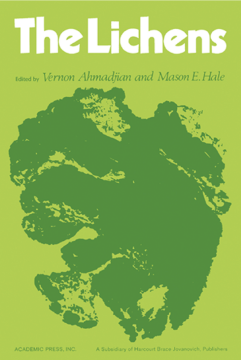
Additional Information
Book Details
Abstract
The Lichens covers the structure and development, physiology of the intact thallus, environmental response and effects, secondary metabolic products, and symbiont interactions of lichens. This book is divided into five parts encompassing 19 chapters. It also includes appendices consist of a taxonomic scheme, methods for isolating and culturing lichen symbionts and thalli, and methods for isolating and identifying lichen substances.
The first part of this book describes the original fungal cell and its development into specialized cells of which the various tissues and thalli are composed. This is followed by discussions on sexual reproduction of ascolichens and basidiolichens and on systematic criteria for the definition of taxa in different hierarchical steps. This book also explains the types of propagules produced by lichens and the submicroscopical investigations of lichens, including phycobiont and mycobionts' substructure and symbiotic relationship.
The second part of this book examines the physiological aspects of lichens. It includes discussions on metal cation uptake and translocation in vascular plants and on lichens' role in rock weathering and soil formation. This part also studies photosynthetic rates and nitrogen absorption and metabolism by the intact thallus of lichens. Succeeding chapters discuss physiological and morphological responses of lichens to the most important environmental factors and the relationship of these factors to lichen distribution. Substrate preferences of lichens and their causes and implications with regard to the ecology, distribution, and taxonomy of lichens are also examined. This text also discusses lichen thalli growth, methods of measurement, and factors influencing growth. Finally, the concluding parts deal with the biosynthesis of lichen substances, secondary metabolic products, and symbiotic relations of lichens to fungi and algae.
This multi-authored book is an ideal source of information for researchers, teachers, and students who wish to broaden their knowledge in the diversity of lichenology.
